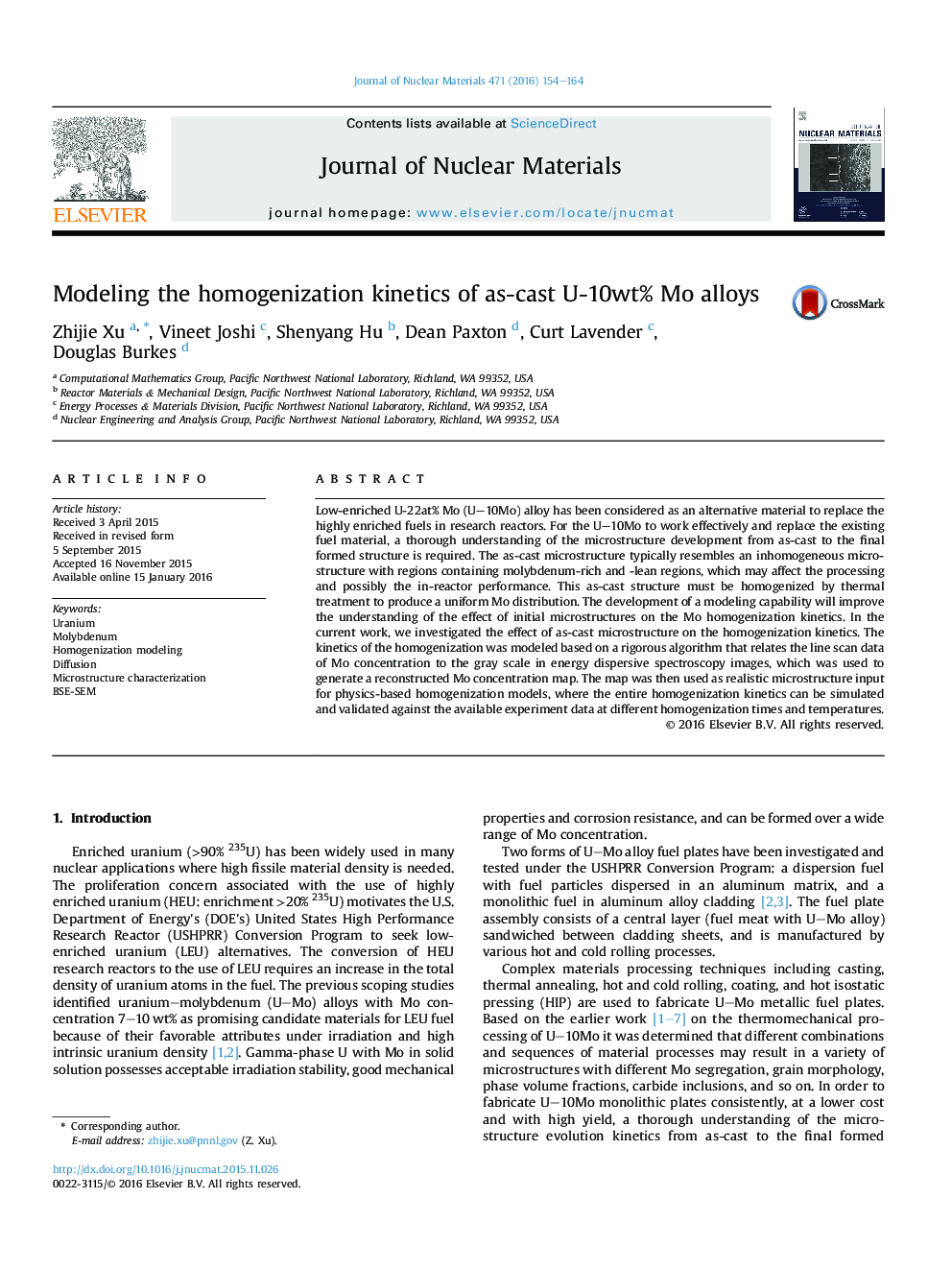| Article ID | Journal | Published Year | Pages | File Type |
|---|---|---|---|---|
| 1564741 | Journal of Nuclear Materials | 2016 | 11 Pages |
Abstract
Low-enriched U-22at% Mo (U-10Mo) alloy has been considered as an alternative material to replace the highly enriched fuels in research reactors. For the U-10Mo to work effectively and replace the existing fuel material, a thorough understanding of the microstructure development from as-cast to the final formed structure is required. The as-cast microstructure typically resembles an inhomogeneous microstructure with regions containing molybdenum-rich and -lean regions, which may affect the processing and possibly the in-reactor performance. This as-cast structure must be homogenized by thermal treatment to produce a uniform Mo distribution. The development of a modeling capability will improve the understanding of the effect of initial microstructures on the Mo homogenization kinetics. In the current work, we investigated the effect of as-cast microstructure on the homogenization kinetics. The kinetics of the homogenization was modeled based on a rigorous algorithm that relates the line scan data of Mo concentration to the gray scale in energy dispersive spectroscopy images, which was used to generate a reconstructed Mo concentration map. The map was then used as realistic microstructure input for physics-based homogenization models, where the entire homogenization kinetics can be simulated and validated against the available experiment data at different homogenization times and temperatures.
Related Topics
Physical Sciences and Engineering
Energy
Nuclear Energy and Engineering
Authors
Zhijie Xu, Vineet Joshi, Shenyang Hu, Dean Paxton, Curt Lavender, Douglas Burkes,
